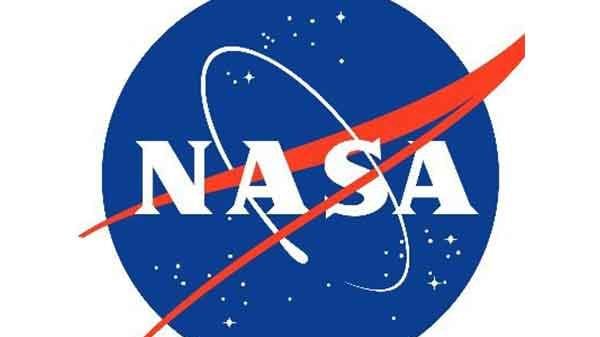Thank you dear subscribers, we are overwhelmed with your response.
Your Turn is a unique section from ThePrint featuring points of view from its subscribers. If you are a subscriber, have a point of view, please send it to us. If not, do subscribe here: https://theprint.in/
When America’s most illustrious scientific agency falls silent, the world pays attention. NASA was forced into a “pause down” in October 2025, which is a general suspension of activity caused by the US government shutdown. This is not the first time America’s space agency has been disrupted, but the scale and consequences of this situation are unparalleled. Some of the young scientists are worried about what will happen next, and this uncertainty is stressful.
The Anatomy of the Shutdown
The shutdown resulted from congressional deadlock when lawmakers failed to adopt a continuing resolution to finance government agencies. Unfunded agencies in the United States are required by law to lay off non-essential employees and halt operations. For NASA, this meant sending thousands of employees home and unexpectedly suspending dozens of initiatives.
Internal documents ordered employees to “conduct orderly shutdown activities” such as storing messages, pausing non-essential projects, and planning for unpaid leave. According to estimates, more than 15,000 civil servants have been furloughed, leaving only a small number of “excepted” employees to carry out absolutely critical tasks such as monitoring astronauts aboard the International Space Station (ISS), keeping satellites on track, and ensuring safety systems remain operational. It’s a partial blackout. Core missions continue; innovation, research, and forward momentum are put on hold. People who worked for years on projects have to pause, and it is frustrating for them.
The practical damage is significant. But the symbolic harm is deeper: an institution founded on vision and permanence is now subject to the stop-start rhythm of partisan politics.
Why This Shutdown Hurts More
Government shutdowns are not new in Washington. NASA has been through these previously, most recently in 2018-19. The timing and intent of the 2025 “pause” are particularly damaging.
First, consider the timing. NASA is at a critical point, planning for Artemis III, its first scheduled crewed lunar landing in nearly 50 years, while also designing the Mars Sample Return mission. A freeze at this stage has the potential to disrupt already-tight deadlines. Second, consider the intent. Analysts point out that the government has used the closure to push through greater cuts to research expenditures. Whistleblowers claim that cuts to scientific divisions began before the closure was formally announced, implying a broader political animosity against long-term research. The result is a sharper contraction than in previous shutdowns. Previously, crises were generally resolved within a few days or weeks, with employees swiftly returning to work. This one appears to last longer, making the restart more expensive and the harm more lasting. Many employees are worried about their jobs and what will happen when work starts again.
For India, ISRO, which has long prided itself on continuity despite modest budgets, faces its own risks. As India expands into ambitious projects—Gaganyaan, Chandrayaan follow-ups, and solar observatories—it must safeguard against similar disruptions. Multi-year protected funding and insulation from political churn will be critical if India wants to avoid NASA’s predicament.
India has done well keeping projects going, like Gaganyaan, even with small budgets. That shows planning matters. The “pause down” also creates an opening: if NASA loses momentum, emerging players can step in. India’s ability to execute reliable, cost-effective missions on schedule may strengthen its reputation as a stable space partner at a time when U.S. consistency is in question.
Can NASA Recover?
NASA has always been resilient. When funding returns, teams will scramble to restart engines, re-engage contractors, and compress timelines. But recovery will not be seamless. Each pause leaves scar tissue—broken contracts, lost talent, missed opportunities. Even when work restarts, some things are hard to fix, like lost time and broken plans. Some propose reforms: insulating core science budgets from shutdowns, creating multi-year appropriations, or establishing contingency funds. Yet political appetite for such measures remains weak. Until then, NASA’s future will remain tied to congressional bargaining, not just cosmic ambition.
A “pause down” at NASA is not just an administrative hiccup; it is a mirror reflecting how vulnerable grand projects become when subject to small politics. Rockets and rovers may capture the imagination, but their lifelines are written in appropriations bills. For the world, and for India in particular, the lesson is stark. Space exploration is not only about technology or courage; it is about constancy. If the U.S. lets its premier scientific institution idle, others will be ready to seize the frontier.
NASA will resume, as it always does. But each pause chips away at the aura of inevitability around American space leadership. And in the quiet control rooms and shuttered labs of this shutdown, the world is reminded: even the biggest dreams can be switched off at midnight.
About the authors:
Anusreeta Dutta is a columnist and climate researcher with prior experience in political research and ESG analysis.
Zahid Sultan is an Independent Researcher having a PhD in Political Science.
These pieces are being published as they have been received – they have not been edited/fact-checked by ThePrint.


